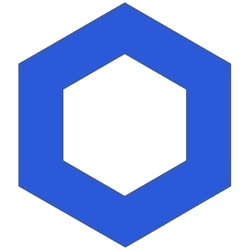Chainlink, UBS and DigiFT Pilot Could Test Automated RWA Tokenized Fund Infrastructure in Hong Kong
LINK
LINK/USDT
$224,404,581.87
$13.52 / $13.05
Change: $0.4700 (3.60%)
+0.0071%
Longs pay
Contents
RWA tokenization in Hong Kong is being piloted by UBS, Chainlink and DigiFT to automate issuance, settlement and lifecycle management of tokenized funds using regulated blockchain infrastructure, aiming to reduce manual reconciliation errors and speed up fund operations.
-
Pilot automates issuance and settlement of tokenized funds
-
Chainlink provides on-chain verification while DigiFT and UBS handle subscription and product contracts
-
RWA tokenization market cap trends: institutional tokenized funds rose 47% over a 30-day span, signalling growing adoption
RWA tokenization pilot in Hong Kong by UBS, Chainlink and DigiFT seeks to automate tokenized funds—read how it works and what it means for institutional adoption.
What is RWA tokenization in Hong Kong?
RWA tokenization is the process of representing real-world assets—like funds or securities—as digital tokens on a blockchain. In Hong Kong, the UBS–Chainlink–DigiFT pilot aims to create a regulated, automated infrastructure that streamlines distribution, settlement and lifecycle events for tokenized funds.
How will the UBS–Chainlink–DigiFT pilot work?
The pilot uses DigiFT smart contracts for investor subscription and redemption requests. Chainlink’s Digital Transfer Agent contracts verify and record orders onchain. Once verified, the system triggers issuance, redemption and lifecycle events on UBS token contracts that follow CMTA Token standards. This reduces manual reconciliation and potential tracking errors.
Why does the pilot matter for institutional adoption?
Automation reduces manual reconciliation and adjustments that create tracking errors. For institutions, lower operational costs and faster settlement can increase returns or reduce investor fees. The pilot also tests regulatory compliance and interoperability within Hong Kong’s financial ecosystem.
What standards and regulatory frameworks are involved?
The pilot adheres to Capital Markets Technology Association (CMTA) Token standards for tokenized securities frameworks. It is part of Hong Kong’s Cyberport Blockchain & Digital Asset Pilot Subsidy Scheme, a sandbox for testing regulated digital-asset implementations under local supervisory expectations.
Frequently Asked Questions
Who is affected by this pilot?
Institutional fund managers, custodians and investors in Hong Kong are primary stakeholders. The pilot’s compliance feedback also targets financial institutions evaluating blockchain integration for regulated products.
How big is the RWA tokenization market now?
In 2025, tokenized institutional alternative funds rose 47% over a recent 30-day period to $1.74 billion. CoinGecko reports a broader market capitalization for real-world asset coins at around $66 billion, reflecting growing institutional and exchange activity.
How to evaluate a tokenized fund pilot (HowTo)
Key Takeaways
- Pilot scope: UBS, Chainlink and DigiFT are testing automated lifecycle management for tokenized funds in Hong Kong.
- Operational benefits: Automation aims to cut reconciliation errors and lower operating costs for fund managers.
- Market context: Institutional tokenized funds and the broader RWA market are expanding in 2025, increasing strategic interest from TradFi and exchanges.
Conclusion
The UBS–Chainlink–DigiFT pilot advances RWA tokenization by proving a regulated, automated infrastructure for tokenized funds in Hong Kong. If validated, it could accelerate institutional adoption and improve operational efficiency. Watch for pilot results and regulatory feedback from the Cyberport scheme and participating institutions.
Comments
Yorumlar
Other Articles
Bitcoin Price Analysis: Will the Uptrend Continue?
1/11/2026
Ethereum 2.0 Update: How Will It Affect the Crypto Market?
1/10/2026
The Coming of Altcoin Season: Which Coins Will Stand Out?
1/9/2026
DeFi Protocols and Yield Farming Strategies
1/8/2026

